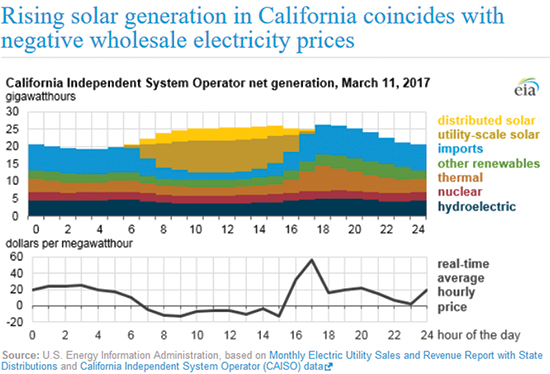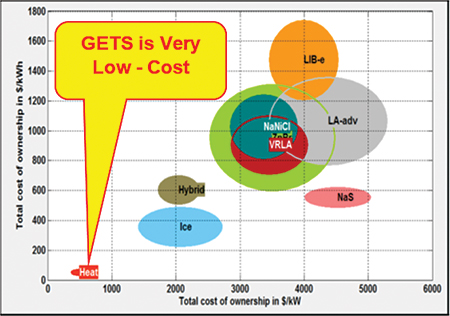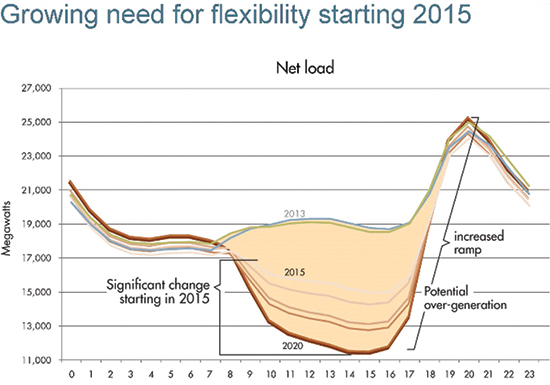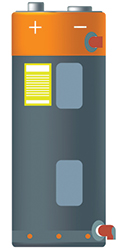Since the turn of the century, the United States has been the world leader in creating opportunities for demand response (DR) in wholesale electricity markets. Beginning in the early 2000s and starting on the East Coast, DR provides necessary energy and capacity resources when increased wholesale prices are high, driven by generation capacity and transmission congestion constraints. Today, the markets have evolved to allow DR to provide ancillary services such as non-spinning reserves, spinning reserves and even frequency and voltage support to its consumers. Even with all of its success over the last two decades, DR has been viewed as a “siloed,” or standalone, application with little communication and connection to other grid resources like storage or renewable energy resources.
At the Peak Load Management Alliance (PLMA) Spring Meeting in Nashville in April 2017, several industry experts pointed out the days of DR as a standalone application are over. DR is now viewed as an integral part of “edge of the grid” distributed energy resources (DER) such as rooftop solar panels, behind the meter energy storage, electric vehicle charging stations and microgrids. In fact, DR will now complement and compete against other DERs in various wholesale markets.
One of the more intriguing transformations in the industry is the way in which residential electric water heaters are being used by electric utilities (mainly electric cooperatives) as DERs. Use of resistance heating water heaters in utility one-way direct load control programs has been around for several decades. These programs have reliably provided valuable capacity to utilities and are one of the most cost-effective programs that these utilities deploy.
The convergence of two separate but related phenomena is about to change the paradigm of how we think and utilize the residential water heater as a DER for the grid. The first is the evolution of the Internet of Things (IoT), which has now made cost effective two-way communication available to devices in the home such as smart thermostats, electric water heaters, load control devices such as pool pumps, and other smart appliances. This enables two-way communication with the water heater to provide not only near real time measurement and verification (M&V), but also to monitor the water heater during load management and charging cycles to assure the customer will never experience a program driven cold-water event, allowing more dynamic control of the water heater while still maintaining customer comfort.
The second phenomenon is the dramatic growth of renewable energy resources, most notably wind and solar, in several states that have high Renewable Portfolio Standards (RPS). Indeed, some states on the East Coast, Midwest and West Coast have renewable energy goals that exceed their RPS and over time will approach 50 percent. This has already resulted in frequent periods of overproduction, meaning that non-dispatchable base load generation (usually coal plus nuclear) and renewable energy generation exceeds demand during certain periods, resulting in curtailing renewable energy generation, negative energy prices or both. These negative energy prices have occurred frequently in the Midwest and in Texas. Both areas have significant wind generation resources which receive a $23-$24 Federal Production Tax Credit (PTC) for each megawatt (MW)-hour generated, incentivizing the generators to produce even when wholesale prices are negative.
This occurred last March in California, which is soon to have as much as 5,000 MW of excess solar generation in the afternoon. This same phenomenon is predicted to occur throughout the PJM ISO territory in the near future. How are these two-phenomena related? Let me cite a real-world example for you.

Great River Energy (GRE) is a generation and transmission electric cooperative in the Midwest that has more than 1,000 MWs of wind energy resources under contract in its resource portfolio. GRE is required to take delivery of the wind energy from its wind energy resources even when the demand for energy from its member cooperatives is at its lowest – typically in the middle of the night. Because GRE is part of the MISO system—they buy all of their energy needs from the market and sell all of their energy resources to that same market. In many hours – particularly in the off-peak hours, the price that MISO is willing to pay to GRE for its wind resources is far below GRE’s production cost – that’s a loss you don’t make up in volume! There are some hours that GRE may have to pay MISO to take the energy (negative prices).
In order to manage this potential challenge, GRE uses its residential grid-interactive electric water heater program. GRE has 70,000 large (85-105 gallon) electric water heaters, which they “charge” each night. It costs GRE a little more than two cents per kilowatt-hour to purchase energy in the wholesale market during off-peak hours – generally 11 p.m. to 7 a.m. (In essence, they are storing the excess wind generation by pre-charging hot water heaters). The water heaters are then shut off (not charged again) for 16 hours during the day when the demand for electricity and price to charge the water heaters is significantly higher. This is not only a win for GRE and its members, but also for the renewable wind generators.
Take a minute and think about the implications. Environmentalists need to realize there are roughly 50 million electric water heaters in this country. The market for new and replacement residential water heaters is estimated at 8 million units per year, depending upon new construction rates. Roughly half of the water heaters are electric and half are natural gas or propane. In the past, the environmental community strongly preferred gas over electricity to heat water as electricity came from coal-fired generation and gas was thought to be a much cleaner resource. Fast forward to today’s environmental footprint, we have a much different picture as much, if not most, of the generation is supplied by renewables of its environmental footprint.
From a DER perspective, we have just turned a one-way direct load control device into a grid-interactive thermal battery that can be charged and discharged one or more times a day without any degradation in performance. That device holds twice the energy of a Tesla Powerwall at roughly 10% of the price. A recent study, performed by The Brattle Group in January of 2016, entitled “The Hidden Battery – Opportunities in Electric Water Heating,” found the cost of a new grid-interactive water heater installation would have a payback in the range of five years in certain markets, and for controls only retrofits the payback would fall to three years or less. From an alternative perspective, one could say the grid-interactive electric water heaters are the most environmentally friendly and by far the least cost-method of energy storage by a factor of five-to-one. The environmental community should be beating a path to electric utilities to promote grid-scale electric water heaters. This may also include systematic replacement of gas water heaters with grid-interactive water heaters. It’s a no brainer.

As shown in the illustration, developed by Keith Dennis with NRECA using Sandia National Labs energy storage analysis tool ES-Select™, Grid Enabled Thermal Storage (GETS) is very attractive compared to other energy storage options for load shifting applications.
California is an interesting case, where the majority of the state’s residential water heaters served by the investor owned utilities are using natural gas. Each of these natural gas water heaters is putting greenhouse gases into the atmosphere every day. Recall that California also has a growing problem with excess solar generation in the late morning and early afternoon causing problems, which require the ramping up of thousands of MWs of gas fueled generation each hour in the evening. This problem is shown in CAISO’s “infamous” Duck Curve1.

Converting the millions of gas water heaters in California to grid interactive electric water heaters would be a “twofer”. First, a significant source of greenhouse gas emissions would be eliminated and secondly, the California solar industry would benefit from a thermal battery fleet which can “soak up” a significant amount of renewable generation reducing grid “over/ under supply” operating issues and the potential for curtailments in the future of renewable generation. Grid interactive hot water heaters could time shift excess renewable supply as well as address the ramping problems in the morning and afternoon.
This is but one example of how an “old” demand response resource is being repurposed to integrate other DER resources in a new paradigm. I believe that in order to take this resource from pilot-project stage to market transformation, the environmental community needs to get on board with the utility industry, and the grid-interactive water heater community needs to educate the policymakers as to why this is a low risk/high return opportunity for the energy industry. What do you think? Whether you agree or disagree, let me know so we can spark a great discussion in influencing transformation.

Your electric storage water heater is a thermal battery
that can help integrate renewable energy into the grid.
About the Author
 Ross Malme is a partner and member of the Skipping Stone board of directors. Malme joined Skipping Stone in May of 2011 and leads Skipping Stone’s Smart Grid, Demand Response, and International Business Practices. These practices have included leading Skipping Stone’s engagement as technical advisor to the US Trade and Development Agency (USTDA), which is focused on export of US Smart Grid Technologies to the developing world as well as similar engagements with the United Nations and international development banks. In addition, Malme is a former member of both the National Energy Standards Board (NAESB) Executive Committee Retail Gas Quadrant and the Advisory Board to the US Secretary of Commerce on Renewable Energy and Energy Efficiency. He also currently serves on the Advisory Committee for Pennwell Publishing’s DistribuTECH Conference.
Ross Malme is a partner and member of the Skipping Stone board of directors. Malme joined Skipping Stone in May of 2011 and leads Skipping Stone’s Smart Grid, Demand Response, and International Business Practices. These practices have included leading Skipping Stone’s engagement as technical advisor to the US Trade and Development Agency (USTDA), which is focused on export of US Smart Grid Technologies to the developing world as well as similar engagements with the United Nations and international development banks. In addition, Malme is a former member of both the National Energy Standards Board (NAESB) Executive Committee Retail Gas Quadrant and the Advisory Board to the US Secretary of Commerce on Renewable Energy and Energy Efficiency. He also currently serves on the Advisory Committee for Pennwell Publishing’s DistribuTECH Conference.
1 The Duck Curve depicts the CAISO hourly load required to be supplied by conventional generation after all available renewable generation is utilized (Net Load).As renewable energy quantities are steadily increasing in early afternoon (see Rising Solar Generation in California chart above) the conventional generation required to serve Net Load is reduced towards zero. This causes significant grid problems in the afternoon as solar energy rapidly decreases requiring conventional generation to quickly ramp up to supply load.







